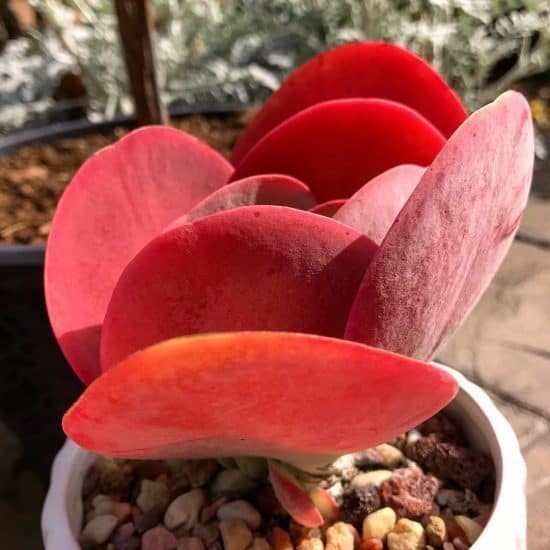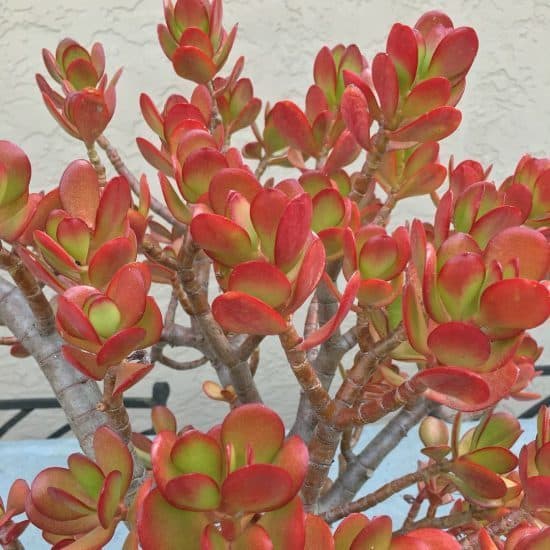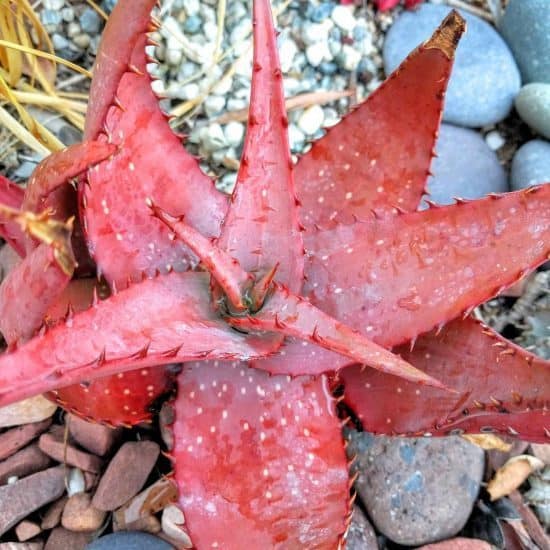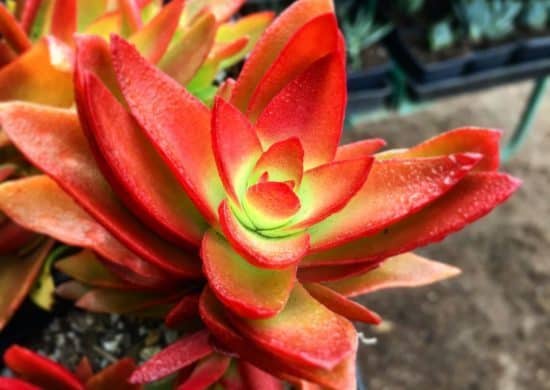Succulent Leaves Turning Red: 5 Reasons Why Succulents Change Color
Have you ever wondered why succulents go through this amazing transformation of turning red? If you’ve ever asked yourself, ‘Why is my succulent turning red?’ then you’re in the right place!
It all started when I got my hands on a Crassula Capitella Campfire succulent. The leaves had a hint of red around the edges, but when I placed it in the sunny spot at home, something magical happened. Within just a few days, the whole plant turned into a fiery red masterpiece!
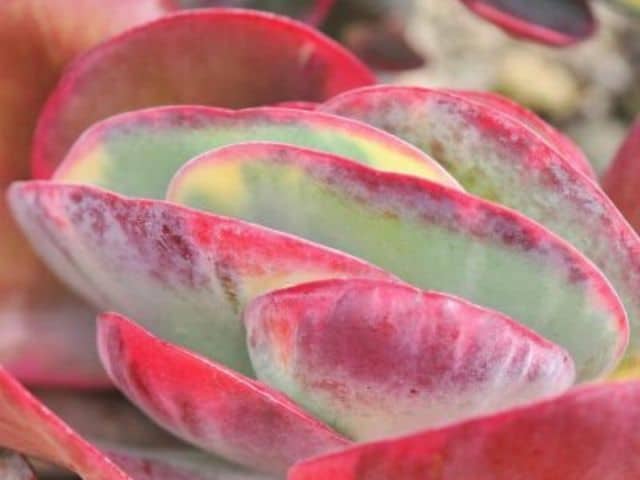
Now, before you go on a succulent coloring adventure, here’s a little heads-up: changing the color of succulents requires some expertise. It’s not exactly beginner-friendly. But don’t worry, I’ll explain why and how succulents turn red, so you can become a succulent color-changing pro! Let’s get started.
Contents
Why Do Succulent Leaves Turn Red?
Have you ever wondered why succulent leaves magically change color? Well, it turns out that these plants have a fascinating behavior that responds to changes in their environment. When succulents experience extreme conditions like intense sunlight, high or low temperatures, or drought, their leaves turn red. But this color change isn’t just for show – it’s actually a clever adaptation. By turning red, succulents are protecting themselves from permanent damage caused by constant stress.
Now, let’s take a closer look at the science behind it. Succulents go through a process called photosynthesis, where they absorb water and carbon dioxide and convert them into oxygen and glucose. During this process, different pigments come into play:
- Chlorophyll: This pigment makes plants appear green.
- Carotenoids: These pigments give off yellow to orange hues.
- Anthocyanins: These pigments create colors like red, purple, or blue.
Typically, succulents in the shade stay green because chlorophyll is responsible for absorbing sunlight and keeping the photosynthesis cycle going. However, when succulents are exposed to intense sunlight or extreme temperatures, carotenoids become more prominent. They act as shields, protecting the plant from excessive UV light and heat. On the other hand, cooler temperatures enhance the stability of anthocyanins, resulting in those vibrant red and bold colors we often see during fall and winter.
So, the process of making succulents change color is known as “stressing succulents.” It’s like a natural response to the conditions they face.
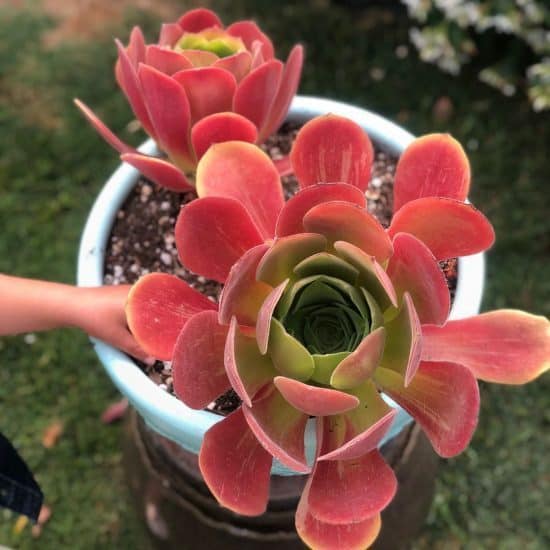
How to Change the Color of Succulents
Now that we know why succulents change color, let’s talk about how we can make it happen ourselves. This technique works best with desert succulents, and it involves recreating their natural environment. Here are the key factors to consider:
- Poor Soil: In the desert, the soil is dry and arid. So, for your succulents, make sure the soil drains easily. Regular potting soil retains too much water, which can harm succulents. You can either create your own soil mix or purchase one specifically made for cacti and succulents.
- Drought: Succulents are accustomed to dry conditions. Resist the urge to overwater them. These hardy plants can survive perfectly fine in completely dry soil for weeks. Instead, water them less frequently but thoroughly. When you do water, make sure the water drains out from the bottom of the pot. If the soil drains too quickly, water them multiple times to ensure the roots absorb enough water.
- Increased Lighting: Exposing your succulents to more light can change their color. However, don’t place them in full sun right away. Remember, in the desert, succulents often grow near rocks or under taller cacti, enjoying some shade during the day. Gradually increase the amount of sunlight they receive. This will trigger the production of higher concentrations of carotenoids, protecting the plants from sun damage.
- High and Low Temperatures: Succulents have clever ways of protecting themselves from extreme temperatures. During the summer, their leaves close up to reduce evaporation, while in winter, they do the same to shield themselves from the cold. Both instances of stress cause them to change color.
- Fertilization: When you’re stressing your succulents to change their color, avoid fertilizing them. Fertilizers can interfere with the color-changing process and cause the plants to revert to their original hue for a while.
Now, it’s important to note that not all succulents change to red, pink, or orange when stressed. Some of the succulents that do include Aeonium, Aloe, Crassula, Echeveria, Euphorbia, Kalanchoe, Sedum, and Sempervivum. Remember, you don’t want to stress your succulents all year long, just for a few months. Keep an eye on them – if you notice burned leaves, brown or black tips, or wrinkled leaves, it means you’re pushing them too hard.
Have you successfully changed the color of any of your succulents? Share your experiences in the comments!
Photos of Succulent Leaves Turning Red
